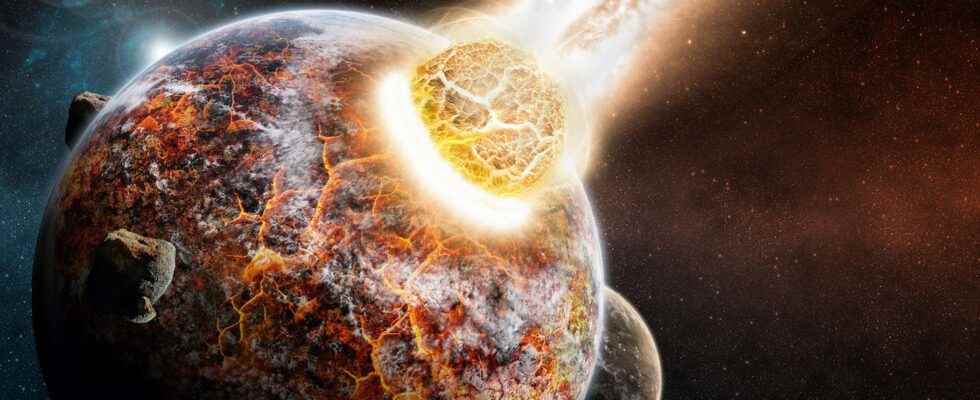Where do the carbon, nitrogen, and water that made the Earth habitable come from? Even today, this question remains intensely debated. Yet one chemical element in particular could help solve this riddle, or at least advance the path of knowledge. This is krypton. Its presence within the deep terrestrial mantle enlightens us on the formation of our Planet.
You will also be interested
[EN VIDÉO] Milky Way: simulating the formation of a galaxy This film shows a computer simulation of a galaxy like the Milky Way. The film advances rapidly through simulated time, from 13 billion years in the past to today. The main galaxy expands as many smaller galaxies merge with it. Heracles looks like one of the small galaxies that merged with the Milky Way early in the process. © Ted Mackereth, EAGLE
When, and from what source, did the volatile elements arrive like carbon, nitrogen and water ? Several models exist. Some studies suggest that the assimilation of these chemical elements took place before the giant impact that gave rise to the Moon, others that they would have arrived after. Three main sources are also mentioned to explain the volatile element composition of Earth : the Sun, chondrites (meteorites rich in carbon coming from outside the Solar system) and the comets.
Krypton, a good chemical tracer
In an attempt to constrain the question of the origin of volatile elements, a team of researchers from the University of California investigated the composition of the Earth’s lower mantle. Scientists have more particularly tracked down the presence of the different isotopes from krypton, a chemical element from the family of gas noble. Being inert, noble gases are indeed good tracers of the sources of volatile elements. Krypton, in particular, is very useful in differentiating solar sources from chondritic sources thanks to their fairly clear isotopic differences.
For their study, the researchers went to sample volcanic rocks produced by volcanoes of hotspot in Iceland and the Galapagos. Indeed, the magma feeding these volcanoes comes from a very deep area in the earthly mantle, close to the limit with the outer core. The composition of the erupted magmatic rocks is therefore representative of a primitive mantle, of which the chemical composition has changed little since the formation of the Earth, 4.4 billion years ago. The magmas rising from these very deep zones are in particular made up of certain noble gases. When they reach the surface thanks to the processes eruptives, the magmas will then trap these gases in the form of small enclaves, which will form small bubbles during the crystallization of the lavas. The researchers set off in search of a particular element within these bubbles: krypton. The measurements required the development of a new analysis technique, based on the mass spectrometry. The different isotopes of krypton have thus been quantified, in particular the rarest ones, such as Kr78 and the Kr80.
The composition of the earth’s mantle is very close to that of chondrites
The results, published in Nature, show that the chemical signature of the current lower mantle is very close to that of the chondrites, primitive carbon-rich meteorites that originate outside the Solar System. On the other hand, studies of the neon, another noble gas present in the Earth’s lower mantle, shows that it originated in the Solar System. These two results suggest that the volatile elements that were aggregated during the formation of the Earth come from at least two different sources: the rocky bodies coming from deep space but also the material composing the earth. nebula primitive solar. These elements would have been integrated very early in the composition of the Earth.
Indeed, isotopes of krypton suggest that planetesimals from outside the Solar System would have bombarded the Earth millions of years before the Moon formed. But, at the same time, our Planet would also have absorbed the dust and gases from the solar nebula. This hypothesis is not only valid for the Earth, but would also explain the formation of other planets of the solar system, even those orbiting around other stars.
These new findings also have implications for how the Earth’s atmosphere was formed. Because the researchers discovered that the ratio between the various isotopes of krypton is not the same for the atmosphere as for the lower mantle. This suggests that some gases from the atmosphere were also brought to Earth after the giant impact that gave birth to the Moon. Otherwise, the two environments, atmosphere and mantle, would have the same isotopic composition.
Interested in what you just read?
.
fs11
